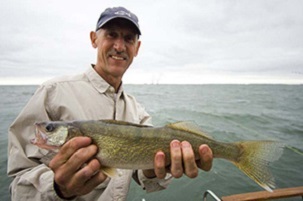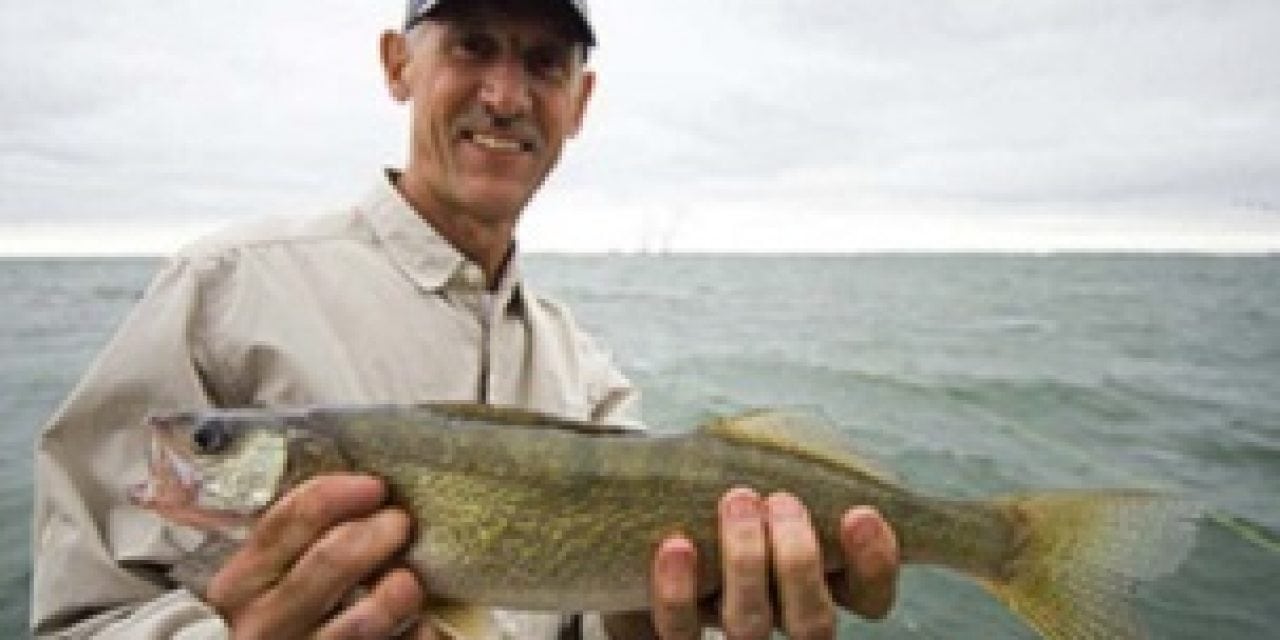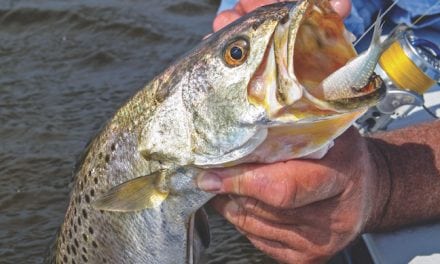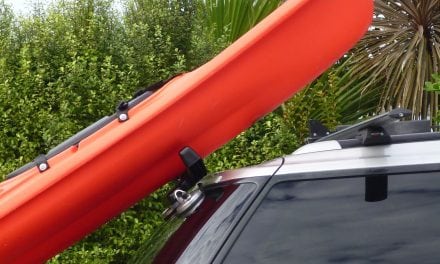 Straddling the Michigan-Wisconsin border in Gogebic and Vilas counties – and lying within the 1842 Treaty-ceded territory – Lac Vieux Desert is a roughly 4,000-acre lake that has been receiving a lot of attention lately.
Straddling the Michigan-Wisconsin border in Gogebic and Vilas counties – and lying within the 1842 Treaty-ceded territory – Lac Vieux Desert is a roughly 4,000-acre lake that has been receiving a lot of attention lately.
Fisheries managers have observed all-time low levels of walleye abundance stemming from declines in natural reproduction. While this decline is not completely understood, a cooperative interagency walleye rehabilitation plan was recently drafted by the Great Lakes Indian Fish and Wildlife Commission, the Wisconsin Department of Natural Resources, the Michigan Department of Natural Resources, the Lac Vieux Desert Band, and Sokaogon (Mole Lake) Chippewa to address the issue. The goal of the plan is to restore natural reproduction and increase the density of adult walleye to at least two and 2.5 fish per acre. The plan includes stocking, coordinated population assessments, harvest management, public education and enforcement efforts.
When the ice retreats on Lac Vieux Desert this spring (anticipated within the next two to three weeks), a survey team of state and tribal fisheries professionals will hit the water to deploy trap nets that will help determine walleye abundance. This is accomplished by marking as many adult walleyes as possible with fin clips. After the marked fish have some time to mix within the lake, crews then use electrofishing boats to sample along the shoreline to determine the proportion of the population that was marked.
Next, the Wisconsin DNR will follow up with another netting survey targeting muskellunge, which are most effectively sampled a little later in the year. Finally, crews will return to Lac Vieux Desert in the fall to determine if there was any natural reproduction by walleye in 2018. If natural reproduction is low or nonexistent, Lac Vieux Desert will receive approximately 64,500 extended-growth fingerlings (6-8 inches) in October or November, courtesy of the Wisconsin DNR, as part of the Wisconsin Walleye Initiative. The Lac Vieux Desert Lake Association also plans to again operate a portable walleye hatchery on the lake for fry production.
In addition to the netting and electrofishing surveys, the Michigan DNR will be conducting an angler survey throughout the year in order to estimate angler effort, catch and harvest. A Michigan DNR creel clerk will interview anglers from a boat and at access sites. Angler compliance with the clerk is encouraged as it is essential to obtain the best possible information for fisheries management. Anglers should be aware that the recreational fishing regulations for walleye on Lac Vieux Desert (in Michigan and Wisconsin waters) are new for this year and include an 18-inch minimum size limit and daily bag limit of three fish. The more protective regulations were put in place as part of the rehabilitation plan. Similarly, the Lac Vieux Desert Band and Sokaogon Chippewa agreed to refrain from spearing or netting walleyes on Lac Vieux Desert from 2018 through 2022.
The Michigan Department of Natural Resources is committed to the conservation, protection, management, use and enjoyment of the state’s natural and cultural resources for current and future generations. For more information, go to www.michigan.gov/dnr.
An accompanying map and photo are available below for download. Caption information follows.
LacVieuxDesertLake-Map: Reservation boundaries are representations and may not be legally binding boundaries.
Jen walleye: A Michigan DNR fisheries biologist holds up a walleye during a population survey.
Contacts:
- George Madison (Michigan DNR), 906-353-6651
- Steve Gilbert (Wisconsin DNR), 715-356-5211
- Joe Dan Rose (Great Lakes Indian Fish & Wildlife Commission),
715-682-6619, ext. 2119 - Mitchell McGeshick (Lac Vieux Desert Tribe), 906-284-0176
- Mike Preul (Sokaogon [Mole Lake] Chippewa Community), 715-478-7621
The post Collaborative walleye restoration efforts to begin on Lac Vieux Desert appeared first on .
















